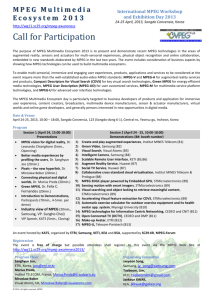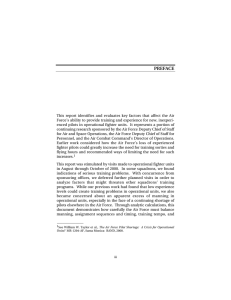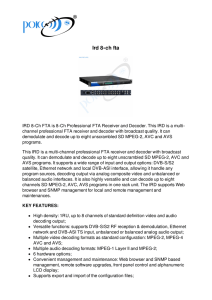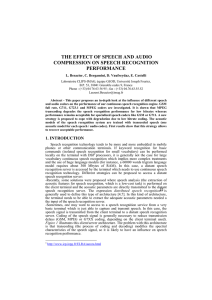Transition from analogue to digital broadcasting
advertisement
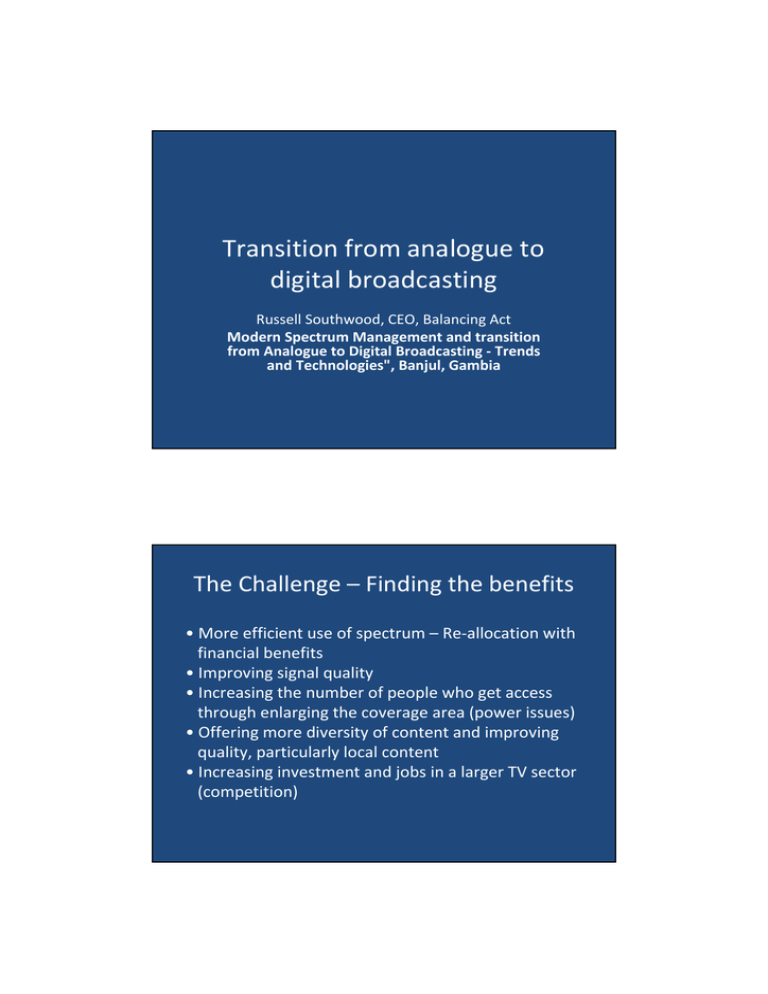
Transition from analogue to digital broadcasting Russell Southwood, CEO, Balancing Act Modern Spectrum Management and transition from Analogue to Digital Broadcasting - Trends and Technologies", Banjul, Gambia The Challenge – Finding the benefits • More efficient use of spectrum – Re-allocation with financial benefits • Improving signal quality • Increasing the number of people who get access through enlarging the coverage area (power issues) • Offering more diversity of content and improving quality, particularly local content • Increasing investment and jobs in a larger TV sector (competition) Current state of play • Public launches: 5 countries • Pilots: 10 countries • Started: 7 countries • Not started?: 30 countries • Will Africa meet the 2015 deadline? Public launches and pilots • Difficulties of assessment: Pilots may actually be very limited in scope • Publicly launched: Morocco, Mauritius (will switch off analog in 2011), Kenya, Nigeria and Tanzania • Pilots: Tunisia, South Africa (delayed by standards discussion), Uganda, Guinea, Central African Republic, Burundi, Gabon (private operator), Ghana, Rwanda and DRC • Tanzania example: Three signal carriers but only TBC/Star TV rolled out so far. Initially four regions (Dar, Dodoma,Mwanza and Arusha). • Set-Top Box: US$45.70 to buy or US$5.87 pm to rent. Selling at 1,000-2,000 per day when first launched Started the process • Algeria (National Committee set up); Botswana (Digital Migration Task Force set up in Sept 2008); Egypt (workshop held February 2009); Ethiopia (Study done, waiting for Government to set up Task Force); Namibia (work done by NBC); Lesotho (outline policy in place); Mozambique (Govt has received plan of implementation); Cameroon (co-operation agreement between CRTV and Chinese?) • Policy processes can take 2-3 years. Deadline is 2015. • Then only 2-3 years to implement. Not started? • The following 30 countries appear to have no policy or planning process for the implementation of digital broadcast transmission: Angola, Benin, Burkina Faso (seminar held), Cape Verde, Chad, Comoros, Congo-Brazzaville, Cote d’Ivoire, Djibouti, Equatorial Guinea, Eritrea, Gambia, Guinea-Bissau, Liberia, Libya, Madagascar, Malawi, Mali, Mauritania, Niger, Sao Tome and Principe, Senegal, Seychelles, Sierra Leone, Somalia, Sudan, Swaziland (study planned), Togo, Zambia and Zimbabwe. • Any updates on this position? Economic costs • Not just distribution and transmission Cf Swazi TV US$3.7 million contract with Spescom for production (2007) • Cost of Set Top Boxes in Africa: US$50100. UK average: US$46 but as low as US$7.67-15. NBC US$26.48 to licencepayers. • Budget 19” digital TV in SA (US$381) and high-end 46” digital TV in Kenya (US$2,000) • Sharing transmission will help reduce costs and increase coverage area • Advertising or Pay TV subscription to support new channels? New Business models? Technology issues • Standard to be adopted. ITU commitment to DVB-T. SA looking at Brazil modified ISDB-T • Edge of coverage area: Analog = signal snowy and blurry picture. Digital = No picture • MPEG 2 vs MPEG 4 Compression standard Countries where announced MPEG 2 Algeria, Mauritius MPEG 4 Ghana, Kenya, Tanzania, Tunisia, Uganda • MPEG 4: Better compression, more channels. Upgrading raises processor power issues. What’s in it for the viewer? • Digital Dzonga Pilot Survey: 35.6-38% failed to set up STB themselves. 87.2% thought “worth the effort.” • Multiple channels – potentially more to watch • Additional languages • Better deliver of public interest programming? • Time-based vs themed channels Policy and Regulatory Issues • Set Top Boxes – Proprietary or open access? Conditional access? Interactive? • Cost of Set Top Boxes – How many will not be able to afford? What can be done to lower costs? • Waste disposal issues? • Coverage area? SA – 60% to achieve “critical mass” Case for Universal access policy? Subsidy for UA policy? Link to power? • Access to signal carriage – One signal carrier? Incumbent broadcaster? Separate agency? Access issues? KE vs TZ • Public interest content – languages (SA, MU); channels (NG – Education), etc; new public interest structures? • Additional channels – Who gets licences? New commercial opportunities? Creating a Road Map Implementing the Road Map • Early decision on standards to allow volume production (compare to neighbours) • There has to be a “prize” for users (signal quality, better services like interactive, more and better channels, languages, etc) • Critical mass of coverage (area by area and over key urban areas • Public campaign involving all broadcasters and Govt; carried by all the broadcasters • Supporting strategy to encourage external investment by key players




